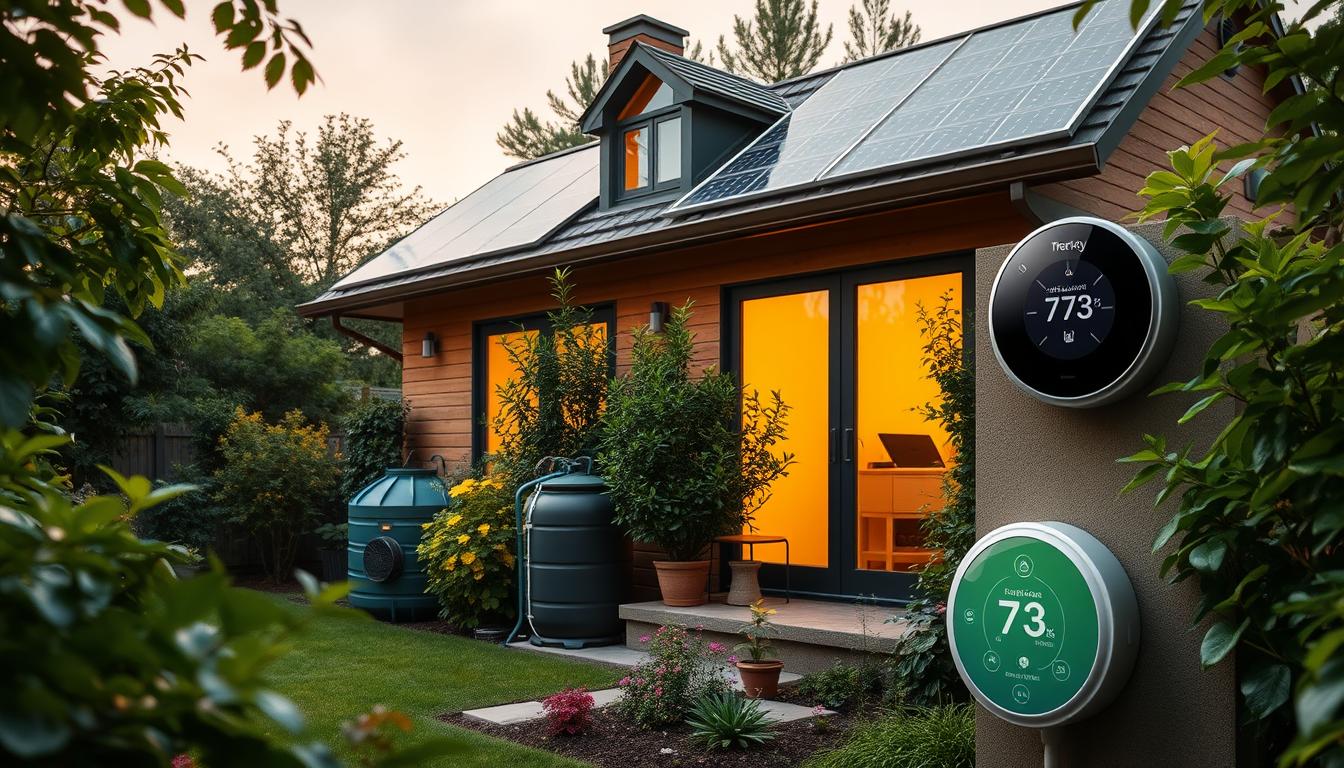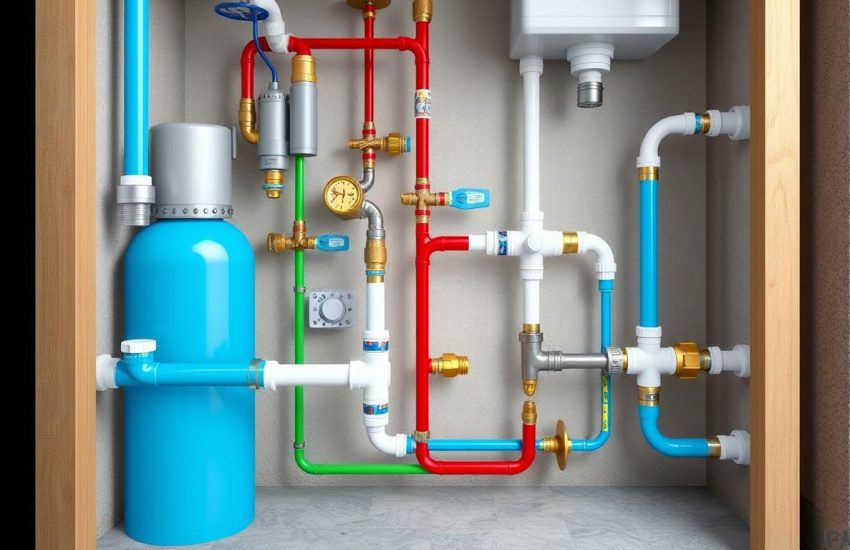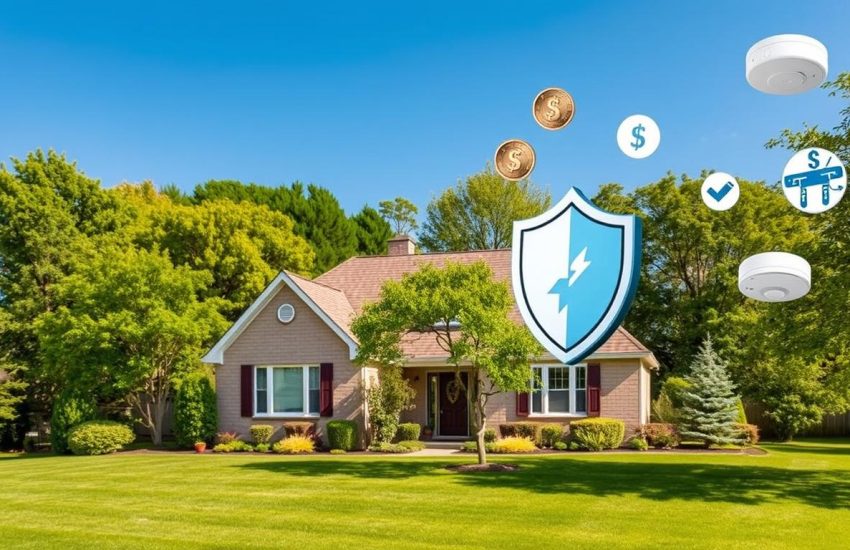Saving On Utilities: A Complete Guide for Homeowners
Have you ever thought about how your house might be losing money? This happens by using things we need every day. Most American homeowners dread seeing utility bills in their mail. With costs going up, it’s time to think, “How can we use less energy and save money?”
Utilities include electricity, natural gas, water, and phone services. Their yearly cost is now around $5,640.72. But, there is hope. Smart homeowners can find ways to lower these costs. You can make small changes or big updates to spend less. This guide will show you how to make your home smarter and kinder to your wallet and the planet.
In this guide, you’ll find many ways to cut your utility bills without giving up comfort. Learn about energy-saving bulbs and the benefits of Energy Star appliances. Also, explore how solar panels can help. Saving money on utilities means making smart choices. These choices help you save money now and in the future.
Key Takeaways
- Electricity, natural gas, water, and communications services combined can cost a household upwards of $5,640 annually—understanding and reducing these costs is imperative.
- Energy-efficient lightbulbs like those with Energy Star labels not only save money but can also substantially reduce your ecological footprint.
- Investing in modern appliances with the Energy Star certification leads to significant energy savings and reduced utility bills over time.
- Solar panel installations may have a considerable upfront cost, but they are instrumental in achieving long-term sustainable energy consumption and cost savings.
- Simple adjustments, such as installing low-flow toilets or tankless water heaters, offer straightforward ways to save on utilities.
- Comprehending various billing rate methods for utilities such as water can assist in better managing usage and expenses.
Why Focus on Saving on Utilities?
Knowing about the environmental impact of utilities is key for homeowners. They not only want to save money on utility bills, but also help the planet. It’s about more than just saving money. It’s a smart way to make your home better for your pocket and the Earth.
Electric and gas bills are high, costing about $121.01 and $61.69 on average. It shows the big need for smart utility use. Saving on utilities is more than just budgeting. It is also key in lessening your carbon footprint. This part talks about why it’s good to use less utilities. It looks at how this helps your wallet and the Earth.
Using utilities wisely helps fight climate change. Making your home more energy efficient is a big step forward. Now, many state policies support this green move. Homeowners are at the center of a big change in saving energy and using it wisely.
Here’s a quick look at the good things that come from saving energy:
- LED bulbs and saving energy tools cut down use a lot. They make your home cheaper to run.
- Smart thermostats and updated HVAC systems use energy only as needed. This means lower utility bills.
- Fixing leaks and better insulation stops wasted energy. This makes sure heating and cooling systems work right.
- Choosing Energy Star tools means spending less on utilities in the long run. They use energy better.
Also, states give incentives to homeowners who join energy-saving programs. These help lower energy bills and cut down on harmful gases. These steps lead to a big decrease in environmental impact from utilities. So, saving on utilities and making green home upgrades are essential. Any homeowner committed to cost-effective home improvement and taking care of the Earth should consider it.
By making these changes, homeowners win in two big ways. They reduce their environmental impact and save a lot on monthly bills. It’s all about being responsible and saving money, while living a green life.
DIY vs Professional Help
Choosing between DIY saving on utilities and getting pros for energy-efficient home upgrades is key. DIY efforts like putting in energy-saving lights can save money fast. Yet, complex tasks might need a professional home energy audit for full savings.
Simple improvements, like painting, work well with DIY. This can cut costs a lot. But for big tasks needing special skills, pros are best. They make sure everything is safe and up to code. This means more savings later.
A professional audit can find hidden energy wasters. This lets homeowners fix them and save more energy.
Comparison of DIY and Professional Approach in Home Upgrades
| Project Type | DIY Feasibility | When to Consider Professional Help |
|---|---|---|
| Plumbing | Installing fixtures like toilets | Complex pipe work requiring specialized tools |
| Electrical | Simple tasks like light fixture installation | Major rewiring or installing safety devices |
| Landscaping | Gardening and paving | Large scale tree removal or landscaping design |
| Flooring | Laying laminate or peel-and-stick flooring | Installing complex materials like hardwood |
| Cosmetic Improvements | Painting, simple moldings | Extensive renovations that might affect structure |
For more DIY saving tips, click here. Find out about deals on things like gutters or roofs.
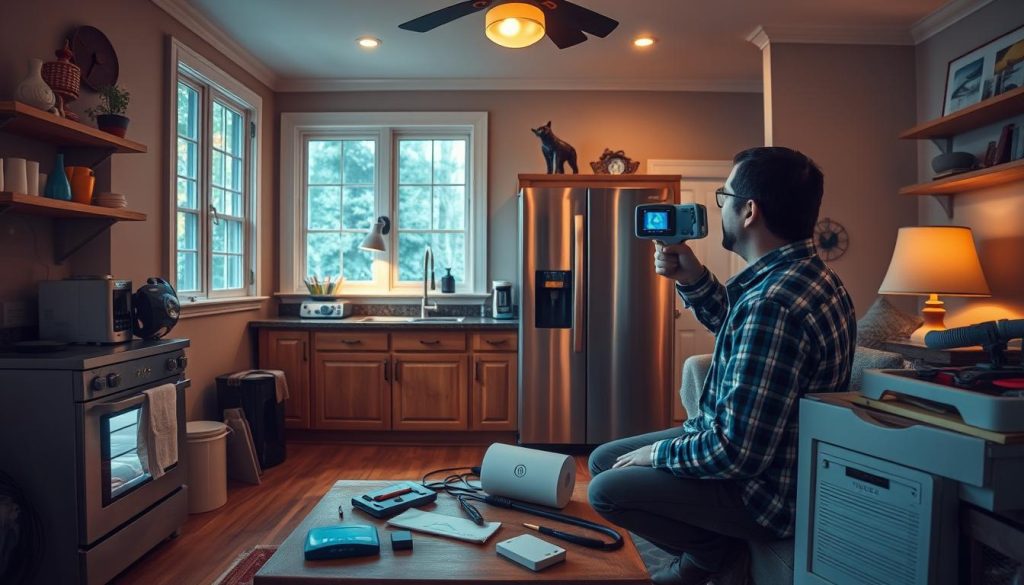
In the end, it’s about mixing cost, effectiveness, and safety. DIY gives quick joy and saves money. But pros can give safe, thorough, and long-lasting improvements.
How to Save Money
To cut your utility bills, you can do a few things. Try using less electricity and saving water. Also, look at how you use natural gas. Doing these can save you money and help the planet.
It’s easy to start saving. Try changing how you use your devices and habits at home. For example, lower your thermostat 7 to 10 degrees for 8 hours a day. This can save you about 10% on heating and cooling costs. It shows small changes can make a big difference.
- Setting your water heater to 120°F can save a lot annually, more than if it’s at 140°F.
- Unplugging devices when they’re not in use stops energy leaks. This can save about $100 yearly.
- Using modern dishwashers saves water. They use only 5 gallons per load, much less than hand-washing.
- Changing air filters often makes your air conditioner work better. This can cut down on energy use.
- Look into plans that charge less during certain hours. Using appliances then can lower your bill.
In California, high electricity rates are a big issue. The Pacific Gas and Electric Company has raised prices. Homeowners are looking at solar panels. They cost some at first but save a lot later. They’re also good for the Earth.
| Utility Saving Measure | Annual Savings Estimate | Additional Benefits |
|---|---|---|
| Lower Thermostat by 7-10 degrees | Up to 10% on cooling/heating | Improves HVAC system efficiency |
| Modern Energy-Efficient Dishwasher | Significant water usage reduction | Less water wasted per dish load |
| LED Lighting | Higher initial cost, lower lifecycle cost | Longer lasting and less frequent replacements |
Lowering electricity use is about saving money and living better. Energy-efficient products might cost more first. But they decrease your bills over time. They are also better for our world.
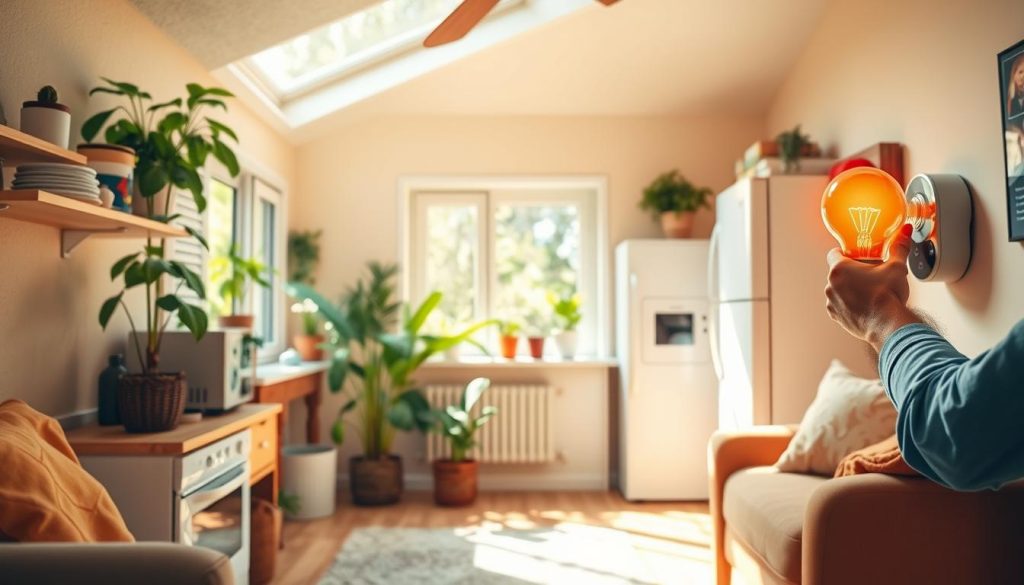
By saving water and reducing gas use, you help your wallet and the Earth. Upgrading to smart thermostats or solar panels makes a big difference. Every little change helps reach the goal of saving energy and money.
Step-by-Step Upgrades
Starting on home energy improvements lowers your bills and makes your home work better. By choosing energy-efficient upgrades, you save money and help the planet. A key step is adding a smart thermostat. This tool makes heating and cooling easier and uses less energy.
Here are some top upgrades using the latest tech and methods for better energy use:
| Upgrade | Benefits | Annual Savings Potential |
|---|---|---|
| LED Lighting | Uses up to 75% less energy, lasts 25 times longer than incandescent bulbs | $225 |
| Smart Thermostats | Automatic temperature adjustments to reduce excess energy use | Up to 20% off heating and cooling bills |
| Energy-Efficient Windows | Minimizes heat loss, reduces workload on heating systems | Varies by climate |
| Smart Power Strips | Eliminates phantom loads by cutting power when devices are not in use | 10% of annual electricity usage |
| Weather Stripping | Prevents air leaks, enhances HVAC efficiency | Reduction in HVAC workload |
These upgrades cut down on how much energy you use and increase your home’s value. Adding these changes gradually makes your home more efficient and green.
Final Tips for Success
To save on utility bills, mix quick fixes with long-term plans. The average summer electricity bill is $173. In Milwaukee, using smart meters and appliances wisely can help.
With 20 million homes late on bills, small changes make a big difference. Clean HVAC filters every three months. Also, wash clothes in cold water to save money. Switching to LED bulbs cuts costs and helps our planet.
Long-term steps like low-flow showerheads save 2,900 gallons of water a year. Sealing leaks can cut $200 from your heating bill. Despite their initial cost, tankless water heaters are efficient. Aim for a home that saves money now and in the future. This way, you’re ready to make the best of energy-saving options.

